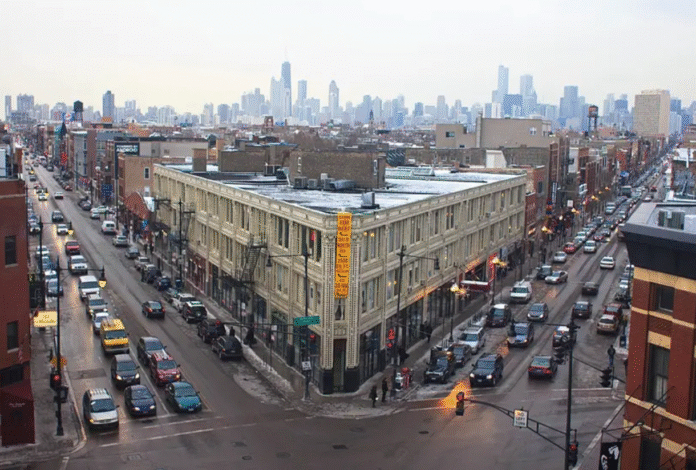The 1990s were a turning point for Chicago. What started as a struggling industrial city ended the decade as one of America’s most exciting places to live and work. These fantastic photos by Steven Martin capture the city during this incredible transformation.
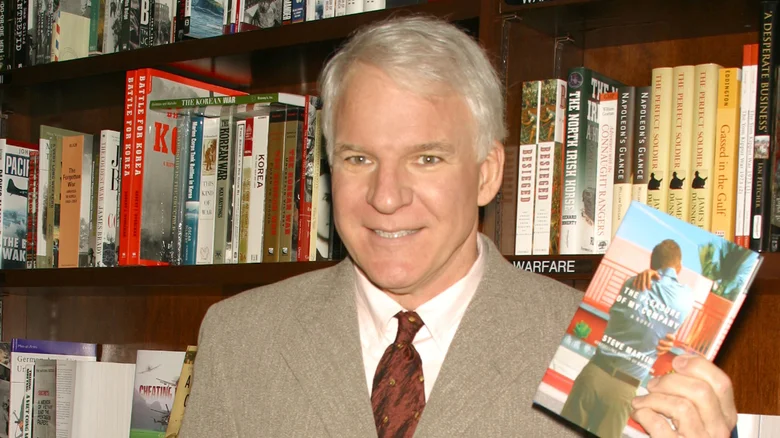
When the decade began, Chicago looked like it might go the way of other Rust Belt cities. The massive U.S. Steel South Works plant closed in 1992, putting tens of thousands of people out of work. This factory had been a symbol of Chicago’s industrial might for generations.
Chicago skyline along the lakefront as it appeared on a winter day in February 1996
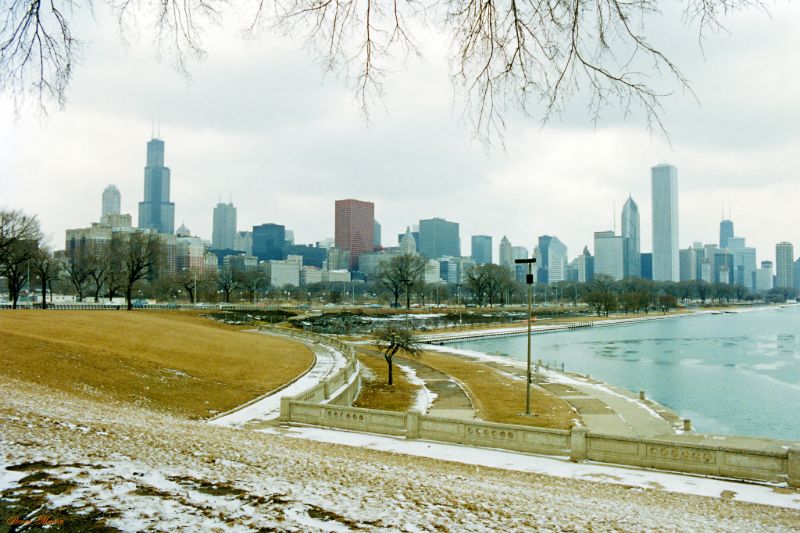
But instead of giving up, Chicago did something amazing. The city completely reinvented itself. Business leaders and politicians collaborated to introduce new job opportunities. By the late 1990s, Chicago had become a major center for professional services.
Advertising agencies, law firms, consulting companies, and investment banks started opening offices in the city. In just ten years, jobs in these fields grew from about 17,000 to more than 60,000. That’s incredible growth.
Sears Tower rising over Hilton and Blackstone Hotels, Chicago, February 1996
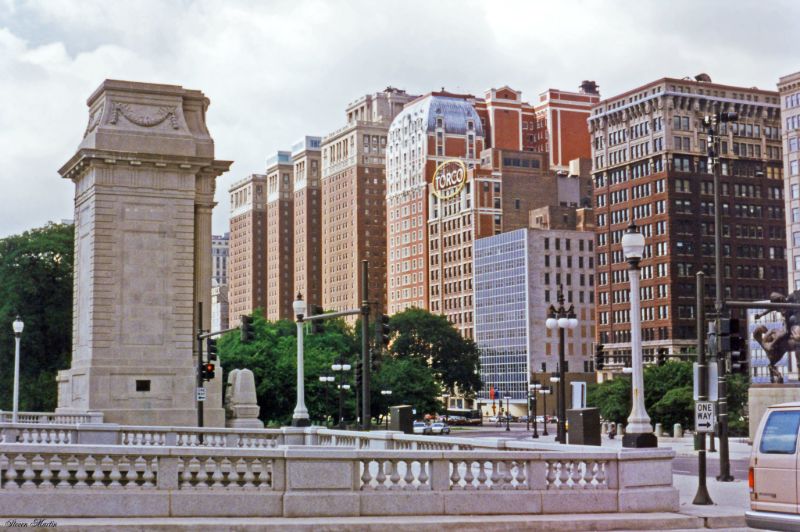
What made Chicago special was that it didn’t rely on just one industry. The city had always been diverse, with businesses in publishing, insurance, finance, grain trading, and transportation. This variety helped protect Chicago when other industries struggled.
The city’s location in the middle of the country was a huge advantage. O’Hare International Airport became the busiest airport in the world during this time. Companies could easily fly anywhere in America from Chicago, making it perfect for business.
The train turning on the curve from Wabash Avenue to Lake Street in the Loop, Chicago, February 1996
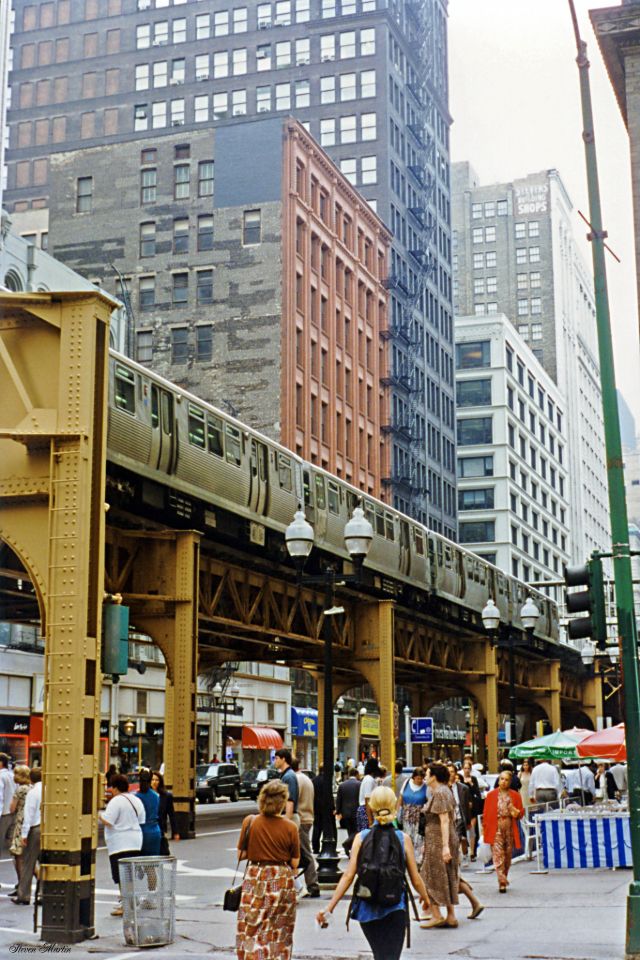
While business was booming, Chicago’s culture was exploding too. The 1990s turned Chicago into one of America’s creative hotspots. The music scene was incredible.
Independent rock bands and post-punk groups found homes in clubs like Lounge Ax. Local record labels like Drag City, Touch and Go, and Bloodshot Records helped launch new artists. These weren’t major corporate labels – they were small, creative companies that took chances on new sounds.
Wicker Park

The city’s creative spirit went beyond just music. Experimental shows like The New Variety mixed comedy, clowning, and live blues music. These shows reflected the wild, creative energy of the time.
By the end of the decade, Chicago had become the center of the alt-country music movement. Bands like Wilco and artists like Robbie Fulks made Chicago their home and helped create a whole new style of American music.
Michigan Avenue looking south from the Chicago River Bridge, February 1996
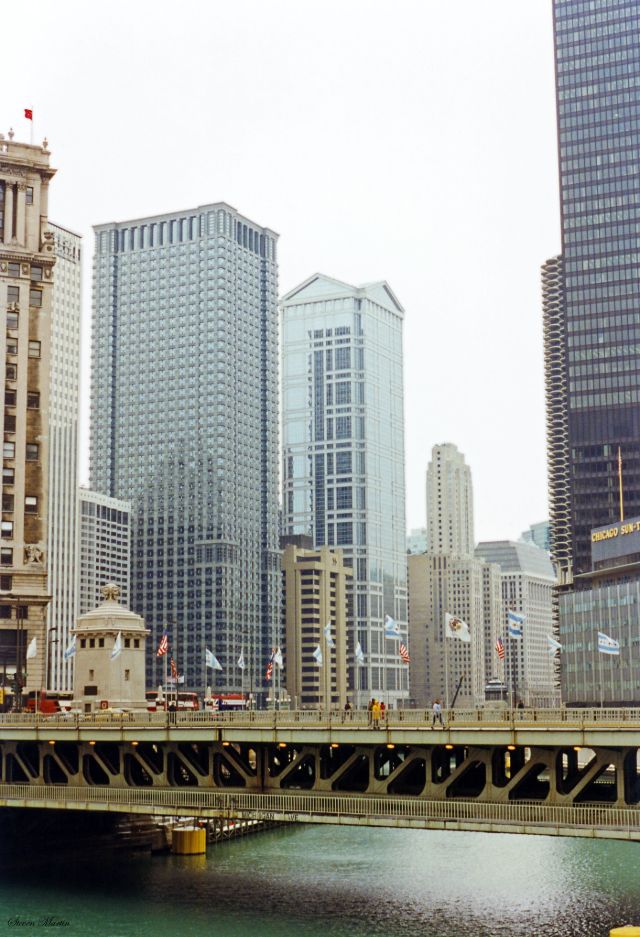
But the 1990s weren’t all good news for Chicago. Crime was a serious problem in the early part of the decade. City leaders knew they had to do something.
In 1991, Chicago launched the Chicago Alternative Policing Strategy, or CAPS. This program aimed to unite police officers and regular citizens in a collaborative effort to combat crime. Instead of just arresting people after crimes had happened, police worked with neighborhoods to prevent crime.
The program worked. By 2002, crime rates had dropped by almost 50 percent. However, not all neighborhoods saw the same improvements. Some areas remained dangerous while others became much safer.
Cabrini–Green and housing project
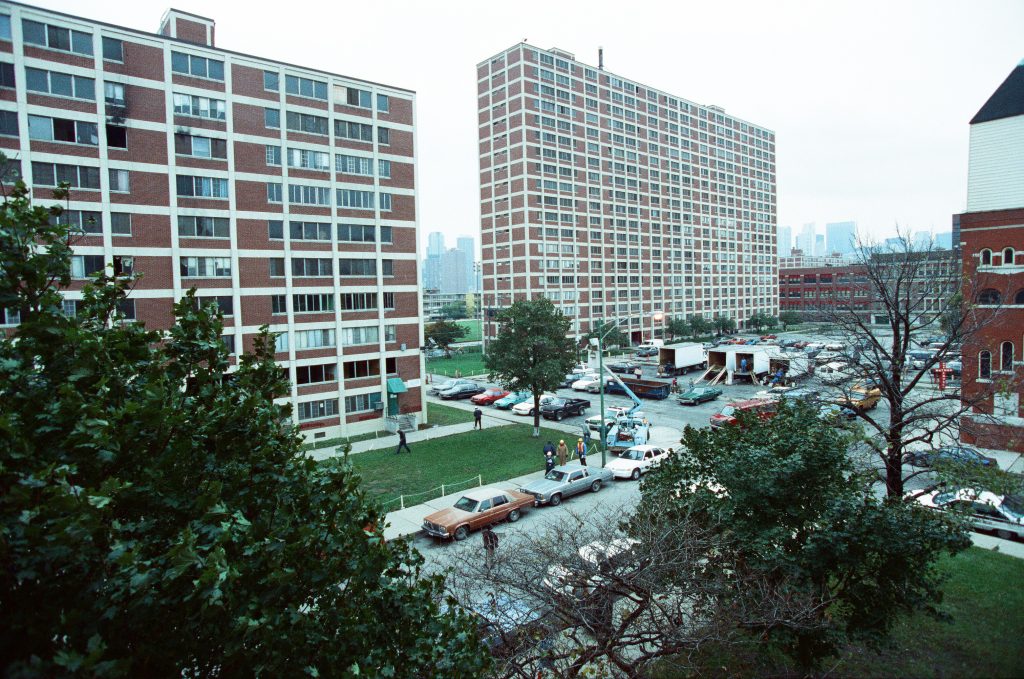
Housing was another significant change in 1990s Chicago. The city’s most famous housing projects, called Cabrini–Green, started coming down in the mid-1990s. These tall apartment buildings had housed thousands of low-income families for decades, but they had become symbols of urban poverty and crime.
City leaders, with help from the federal government, decided to tear down these projects. They planned to build mixed-income communities instead – places where poor, middle-class, and wealthy people could all live together.
This plan was controversial. Thousands of families had to move out of their homes. Many people questioned whether this was really helping low-income families or just pushing them out of valuable downtown areas.
Buckingham Fountain, Chicago, July 1996
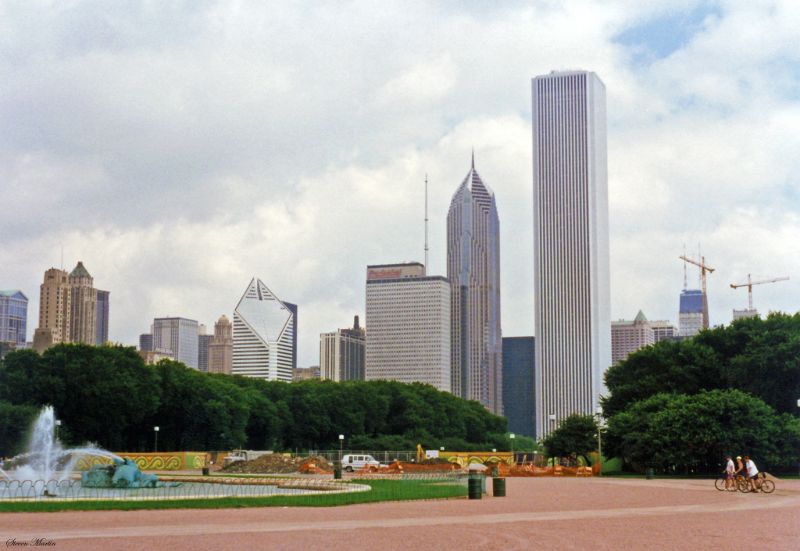
The neighborhood that best captured the concept of “energy” in 1990s Chicago was Wicker Park. This area had been rough and cheap, which made it perfect for artists and creative types who could not afford expensive rent.
During the 1990s, Wicker Park became the center of Chicago’s creative scene. Musicians, artists, writers, and performers all lived there. The neighborhood was full of cheap apartments, cool coffee shops, and music venues.
People who lived there during this time have great memories. One resident remembered starting days with breakfast burritos at Leo’s Lunchroom and spending evenings at clubs like Milk of Burgundy or Hot House. I missed the chance to hear police officers share stories at the Busy Bee restaurant after their night shifts.
Navy Pier, Chicago, July 1996
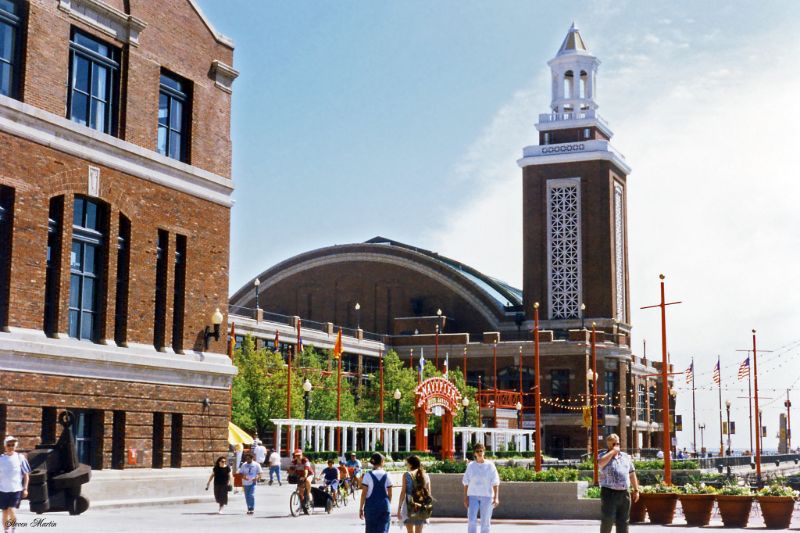
For many creative people, Wicker Park offered something special – cheap rent in interesting buildings where music, art, and creative energy could flow freely. Yes, it could be dangerous sometimes, but for young artists, it was worth it.
The photographs by Steven Martin show a city in transition. You can see the old industrial Chicago in some images, but also the new, modern city that was emerging. The skyline was growing taller and more impressive. New buildings were going up while old ones were being renovated.
The Art Institute of Chicago, with bronze lion statues, July 1996
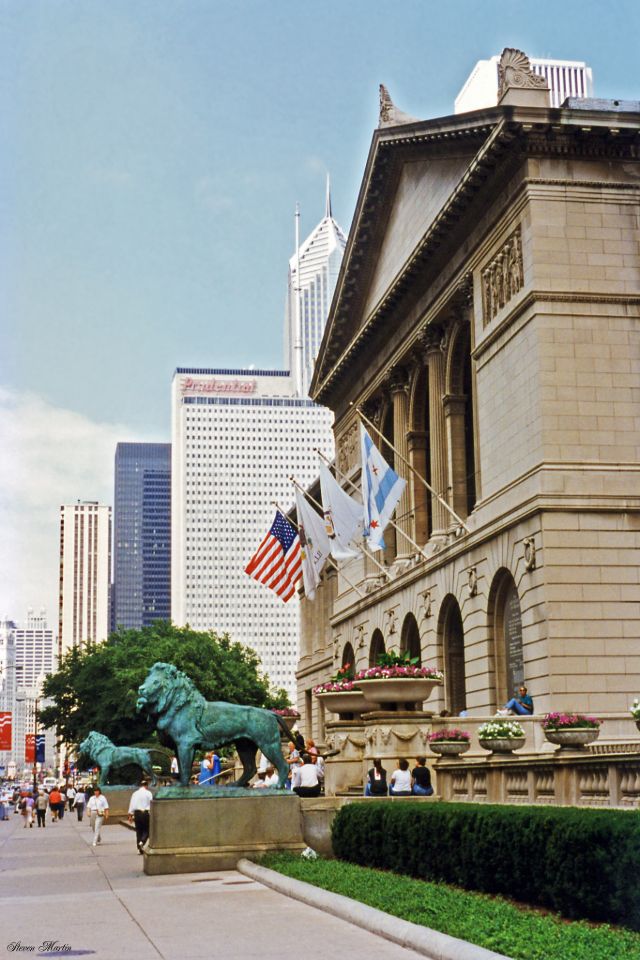
By the end of the 1990s, Chicago had transformed itself entirely. It had gone from a declining industrial city to a modern metropolis with global connections. The town proved that American cities could reinvent themselves if they were willing to change and adapt.
This transformation wasn’t perfect. Some people were left behind, and some neighborhoods saw more benefits than others. But overall, 1990s Chicago showed what was possible when a city refused to give up on itself.
So today, when we look back at these photos from the 1990s, we see a city full of energy and possibility. Chicago in the 1990s was not just surviving – it was thriving and setting an example for cities across America.
image by:Steve Martin via Flickr

